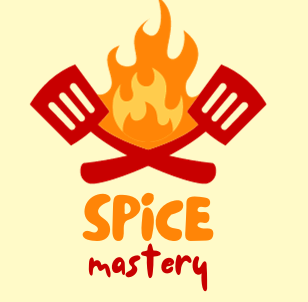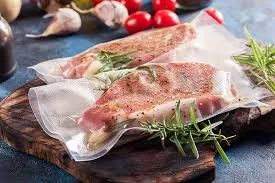Sous vide food isn’t some novelty. It’s become a core strategy in kitchens trying to do more with fewer people, tighter margins, and rising customer expectations. If you’re not using sous vide in your restaurant yet, that’s not some quirky choice. It’s a missed opportunity. Because sous vide food solves real problems that operators face every day.
This isn’t about chasing trends or experimenting with fancy gear. It’s about turning out food that’s consistently cooked, safe, and fast to serve – without wrecking your labor budget or tossing half your inventory at the end of the week.
What Is Sous Vide Food and Why Restaurants Use It
Sous vide food is cooked in a vacuum-sealed bag, submerged in a temperature-controlled water bath. The temperature doesn’t fluctuate. The heat transfers slowly and evenly. You don’t overcook one edge of a steak while the middle stays raw. You don’t guess when chicken is done. You don’t rely on instincts or hope someone set the grill timer.
Restaurants use sous vide because it removes a lot of the variables that cause inconsistency and waste. You can take a chicken breast, cook it perfectly to 145°F for 75 minutes, and hold it ready-to-serve in a water bath without drying it out or risking contamination. The same process works for eggs, fish, beef short ribs, vegetables – anything that benefits from exact control and holding time.
Save Time on the Line
Think about what actually slows you down during service. It’s not just prep. It’s the last-minute cooking, the constant watching, flipping, timing, correcting. A line cook spends five minutes babysitting a steak, only to get a complaint that it came out medium instead of medium-rare.
Sous vide removes that bottleneck. Your proteins are already cooked to the right temp. They just need a quick finish – maybe a 45-second sear, maybe just plating. You can prep in batches, hold in warm water, and turn tickets faster during peak hours.
It also slashes training time. New cooks can be trained to plate and finish rather than mastering the nuances of every cut and cook time. When your operation depends on speed, consistency, and not losing your best people to burnout, sous vide helps you stay functional without relying on heroic efforts.
Cut Waste That Kills Margins
Food waste hurts. Especially when you’re dealing with expensive proteins and unpredictable volume. In traditional cooking, you lose product to overcooking, spoilage, portioning mistakes, and trimming errors. Sous vide cuts into all of that.
Vacuum-sealed sous vide food lasts longer – often up to two or three weeks in refrigeration – because the air and contaminants are removed before cooking. That extended shelf life helps when you’re prepping for fluctuating covers or rotating menus.
And because you’re cooking in sealed bags, you’re not losing moisture. A raw steak might shrink 25% on a grill. Sous vide beef loses far less juice, meaning more yield per pound and better plate cost predictability.
It also means fewer returns. When you serve a salmon fillet that’s soft, flaky, and cooked to exactly 125°F every time, diners don’t send it back. That saves the food. And it saves your reputation.
Serve Better Food, Every Time
No guest cares how hard your shift was or how short-staffed you are. They just want a plate that tastes good. Sous vide meals for restaurants are about taking control of quality and removing the guesswork that ruins it.
Fish stays tender, not stringy. Eggs come out with the same texture every time. Pork belly stays juicy and rich, not rubbery or overcooked. You don’t need to tweak the grill temperature, rotate the pan, or cross your fingers.
Even better, sous vide allows for precision across locations. If you run multiple restaurants, or cater large events, or operate a hotel with high-volume service, you know how hard it is to keep things uniform. Sous vide doesn’t care who’s on the line. It’s the same result every time.
What Kinds of Sous Vide Food Work in Restaurants?
There’s no one-size-fits-all. But some categories make more sense than others for commercial sous vide food. Here’s what chefs tend to use most:
- Beef short ribs and steaks – higher yield, more tenderness, uniform doneness
- Chicken breasts – juicier and more forgiving
- Fish like salmon – easier to hold, delicate texture preserved
- Eggs – useful for brunch service or grab-and-go
- Vegetables – especially roots like carrots or potatoes, finished quickly in a pan
- Pork belly or shoulder – long, slow sous vide time replaces braise without the attention
The trick is identifying the items that cost you the most in prep time, waste, or complaints. Those are usually your best bets for converting to sous vide.
Why Partnering with a Sous Vide Food Company Works
You can buy your own equipment, train your staff, and build an in-house sous vide program. But for most restaurants, it’s not realistic. The cost of vacuum sealers, commercial immersion circulators, chillers, and dedicated storage adds up fast. And consistent execution takes more labor than most operators can spare.
That’s why a lot of restaurants outsource their commercial sous vide food to a partner. A sous vide supplier – like Cuisine Solutions – produces high-quality, chef-developed items at scale. These aren’t boil-in-bag meals. They’re precision-cooked components that you finish and plate in your own style.
A good sous vide food supplier gives you flexibility without complexity. You can rotate menu items faster. You can serve short ribs or lamb chops without needing a full-time saucier or a six-hour prep window. You get food that meets HACCP safety standards and ships in portion sizes that make sense for your operation.
And most importantly, you stay in control of the experience. You still season, plate, and finish. But you do it on your schedule, with less pressure and fewer variables.
If You’re Not Using Sous Vide Yet, You’re Falling Behind
Restaurants today aren’t judged just on creativity. They’re judged on consistency, speed, and cost control. Sous vide food helps you check all three boxes without adding complexity to the kitchen.
Whether you run a small bistro, a busy catering business, or a full-service hotel kitchen, sous vide meals for restaurants are worth considering – not just for the food quality, but for the operational benefits they deliver.
It’s not just about cooking differently. It’s about running smarter. And right now, smart matters more than ever.
Backlinks Hub highly experienced SEO Team with over 4 years of experience. WE are working as contributors on 100+ reputable blog sites.

